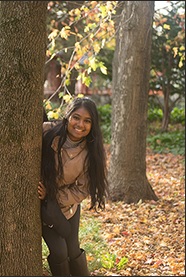Something old, something new
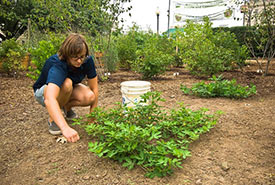
Tending a community garden (Photo by Bob Nichols/US Department of Agriculture, Wikimedia commons)
For as long as I can remember, I’ve been enchanted with the magic of gardening. The way I see it, gardening has the power to give life and mark new beginnings, turning something old into something new. Better yet, there’s nothing like spending some time outdoors. The benefits are limitless.
Connecting with nature, especially for urbanites, can be challenging. With the summer season in full swing, why not try your hand at gardening and landscaping with native plants to create something new?
In the past, replacing lawns and traditional landscaping with native plants was controversial because of misconceptions and myths behind the act. Some of these misconceptions included that native plants are messy, they are not as pretty as non-natives and native plants are not always “native.” Today, it has become a popular gardening philosophy.
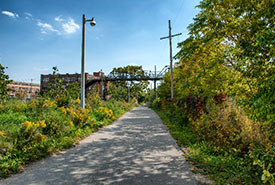
West Toronto Railpath (Photo by Mario Giambattista)
Besides increasing your garden’s aesthetic value, adding native plants to your landscape helps to restore and maintain biodiversity within local ecosystems. Planting and re-introducing species native to an area helps establish a space that provides habitat and food for many wildlife species, such as pollinators and birds.
Beyond the backyard, urban landscaping with native plants is making the rounds across Canada. Many cities are looking for ways to bring biodiversity to urban areas by greening public spaces. Among these cities include Toronto and its work on the West Toronto Railpath, which transformed an abandoned railway into a public park.
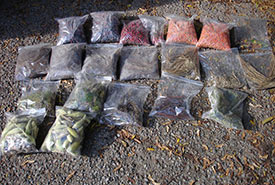
Native seeds were collected from existing plants on the trail. (Photo by Friends of West Toronto Railpath)
Designers of this urban park balanced recreation with greenness to provide habitat for wildlife and increase biodiversity. Native plants and seeds found along the railway site were collected, stored in a seed bank and eventually used to restore natural ecosystems.
Gardening with native plants is not limited to large spaces. While they may be often overlooked, small spaces can serve as excellent pieces of land for urban green landscaping. Transport corridors, concrete planters and edges of various sites, such as parking lot curbs and sidewalks, all make ideal spaces.
Getting started
You might be surprised to learn that species you thought were native are unfortunately not. Invasive plants such as Japanese knotweed, English ivy and periwinkle should definitely be avoided as they can do more harm than good. Non-native plants can offset balances within ecosystems. They also often require more maintenance. It is best to first conduct an audit of the species native to your area and determine their origins.
Check out the Nature Conservancy of Canada’s (NCC) native gardening 101 for more information and local resources.
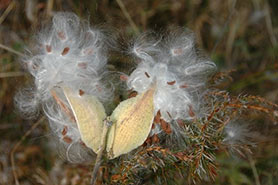
Milkweed seeds (Photo by Bill Macintyre)
Consider starting your garden on a small scale. If you choose to landscape in a public area such as an abandoned lot, try planting milkweed or black-eyed Susan. Remember, do not trespass on land to plant a garden. Contact city officials if you would like to participate in public landscaping to determine where you can plant.
In your own backyard, consider replacing non-native plants with native ones. Indigenous plants can help restore and enhance natural elements, including soil quality (controlling erosion) and, by extent, biodiversity within localized ecosystems. Wildlife in your area will greatly benefit as well as native plants are a source of food and shelter.
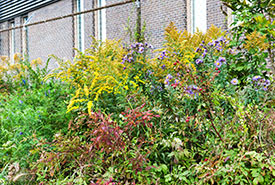
Learn about which plants are native to your local area. (Photo by Mario Giambattista)
The benefits of gardening extend to people too. Learning about your area and its native species can help both personal and community efforts to preserve local ecosystems. Public green spaces with native species can help people connect with nature. They can also be used to educate communities on wildlife.
This summer, take part in NCC’s Small Acts of Conservation. Check out the Power to the Pollinators challenge to start your native gardening journey!
As Canadians, nature is part of our identity. It is important that we work together to maintain land across our nation for the benefit and diversity of species.
The Conservation Internship Program is funded in part by the Government of Canada’s Summer Work Experience program.

